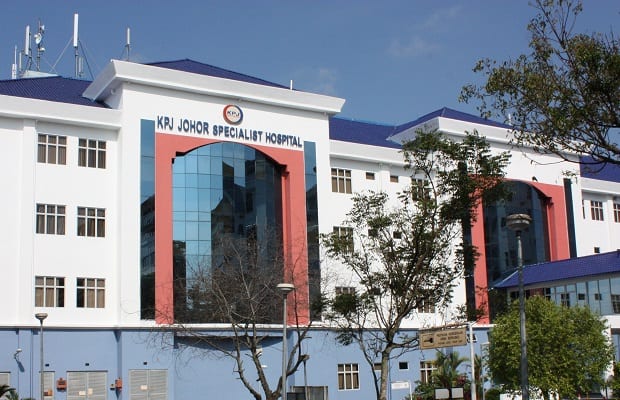
Over the past year, I found myself in and out of a KPJ Specialist Hospital. The reason was because my wife was expecting and our obstetrician is a doctor with a clinic in a KPJ Specialist Hospital. We ended up having to spend hours waiting for our turn to see the doctor every month. During that time, I couldn’t help but notice how crowded the hospital was every time I visited.
So, during the waiting times, I turned to Google to find out more about the company. KPJ Healthcare Berhad is actually one of the largest private healthcare groups in Malaysia. Listed on Bursa Malaysia, it has a market capitalization of more than RM4.4 billion.
More interesting to me was that the very hospital we visit is owned by Al-`Aqar Healthcare REIT (Bursa: 5116). The REIT owns most of KPJ Hospitals in Malaysia. It is the first REIT listed in the world that is structured and operated in accordance with Syariah. Apart from that, it also must ensure that all its tenants are operating in activities permissible by Syariah. This piqued my interest and I headed down to Al-`Aqar Healthcare REIT’s AGM to find out more.
Here are the 8 things I learned from attending Al-`Aqar Healthcare REIT’s 2017 AGM:
- Al-`Aqar Healthcare REIT is the first healthcare REIT to be listed on Bursa Malaysia. It was listed on the exchange in 2006 with a market capitalisation and a property value of RM340 million and RM466 million respectively. Today, the REIT has grown threefold with a market capitalization of about RM1.1 billion and a property value of RM1.5 billion. It owns 22 properties in Malaysia including 19 KPJ Hospitals. It has one prized asset in Australia. The Jeta Gardens Aged Care & Retirement Village in Queensland, Australia, represents about 9.4% of the REIT’s total property value. It also contributeed about 12% to the net rental income of the REIT in 2016. The entire retirement village comprises a 106-room facility, with 23 independent villas and 32 independent living apartment units.
- Al-`Aqar was awarded “Highest Returns to Shareholder Over Three Years” by The Edge-Billion Ringgit Club in 2016. The REIT generated a total return of 17% for its unitholders in 2016 alone. This was mainly due to a sharp run up in its price from RM1.40 per unit in December 2015 to RM1.57 per unit by the end of 2016. The REIT also paid a 4.9% yield for investors from its 7.70 sen distribution in 2016.
- However, the REIT saw a 6.4% drop in its revenue in 2016. Management explained that this was mainly due to its disposal of its Indonesian assets in late 2015. Without the disposal, its revenue improved at a modest rate of 0.55%.
Its net property income also declined 6.7% in 2016. Again, this was due to the stop in contributions from its Indonesian assets in 2015. If we adjust for the change, its net property income would have improved by 0.5% for the year.Revenue 2015 (RM millions) 2016 (RM millions) Growth (%) Malaysia 91.68 92.05 0.40% Australia 11.59 11.79 1.73% Indonesia 7.67 -
Net Property Income 2015 (RM millions) 2016 (RM millions) Growth (%) Malaysia 85.61 85.93 0.37% Australia 11.46 11.66 1.75% Indonesia 7.50 - -
The REIT ended the year with a 9.3% drop in its earnings per unit but maintained its distribution per unit at 7.7 sen.
- One unitholder asked during the AGM on the relationship between Al-`Aqar REIT and its sponsor KPJ Healthcare Berhad. Basically, the REIT has a strong relationship with KPJ Healthcare Berhad and owns most of the company’s hospitals. The leases on its properties with KPJ Healthcare are mostly on a 15-year lease with a rent review every three years. In 2016, the REIT enjoyed a 100% occupancy rate. However, according to the REIT manager, it does not have first-right-of-refusal on any KPJ-owned hospitals and all acquisitions will have to be done on a willing-buyer, willing-seller
- Al-`Aqar is at the final stage of discussions to dispose one commercial tower in Johor Bahru. The building, Selesa Tower, will be sold at RM100 million, enabling the REIT to record a gross gain of RM13 million from the deal. Selesa Tower was acquired by the REIT in 2009 for RM87 million.
- The REIT manager plans to use the proceeds from the disposal to pay down its debt first. The remaining proceeds may also be used for future acquisitions. The REIT manager mentioned at the AGM that it is currently in discussions for a few possible acquisitions and unitholders should expect an announcement in the next three months. Apart from that, the manager also expects the REIT to continue growing from rental escalations during lease renewals.
- The REIT is currently trading at about 1.3 times its book value and offers a 4.9% distribution yield. The yield is still slightly higher than the 10-year Malaysia Government Securities which yield around 3.47% to 4.22%. The REIT has a policy of distributing at least 95% of its distributable income. It also pledged to maintain as least a 6.5 sen distribution per unit every year. It is a promise that it has kept for the last five years. It reduced its gearing ratio from 41% in 2015 to 40% in 2016.
Liked our analysis of this AGM? Click here to view a complete list of AGMs we’ve attended »



